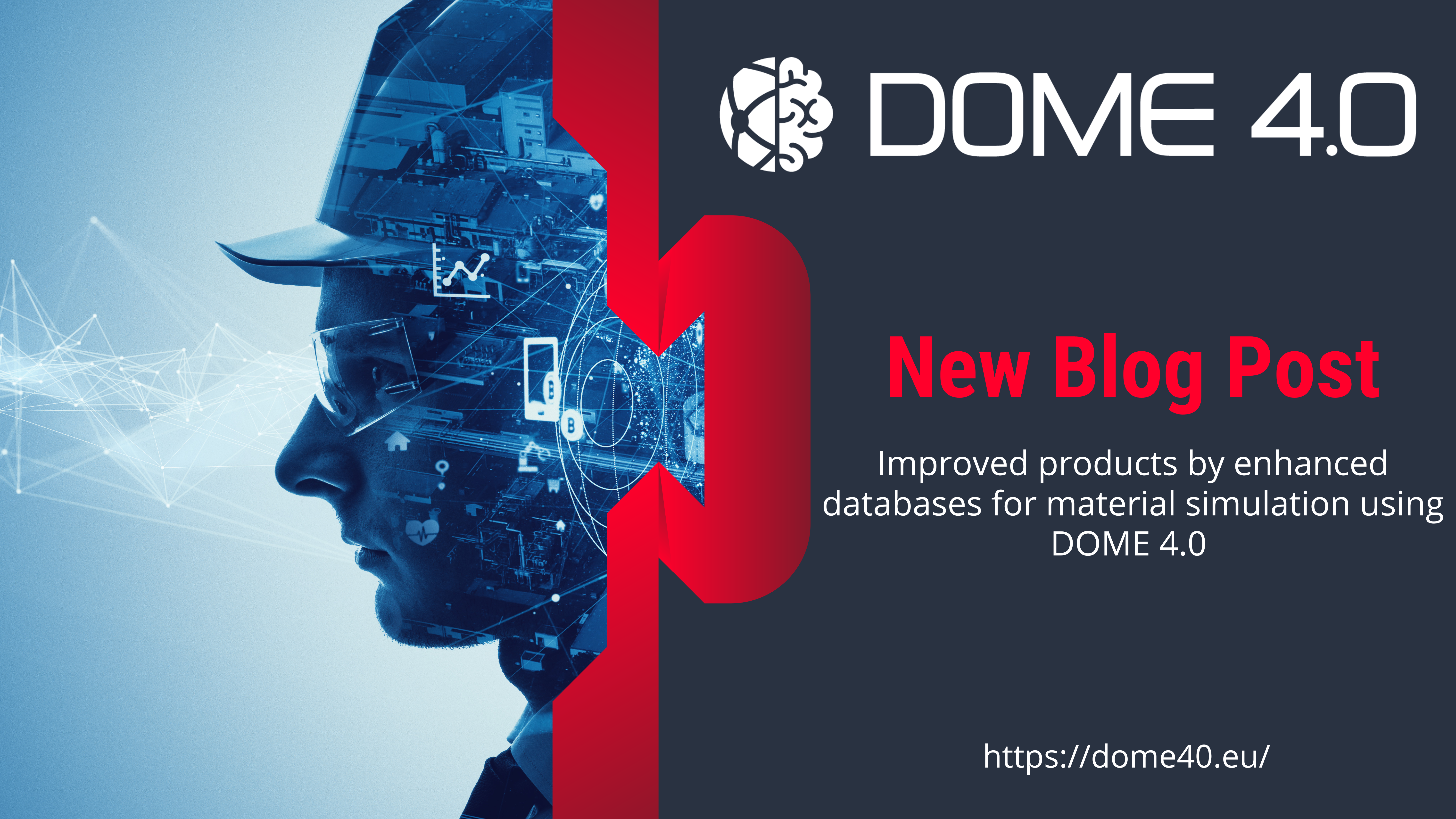Improved products by enhanced data bases for material simulation using DOME 4.0
Reducing the time-to-market is a key objective in the industrial product design process in order to compete successfully in the global economic competition. Virtual product design processes are increasingly being used to speed up the product development process.
Virtual product development using numerical simulation essentially relies on the availability of credible property data for the engineering materials used. Providing the material databases including all relevant effects such as temperature, humidity, aging, degradation during service, etc. requires tremendous experimental effort in the testing laboratory even for a single specific material. The situation is even more complex for recycled materials, which may have degraded during their first life and which could have some extent of property variation due to their origin.
On the other hand, for many materials, a vast amount of knowledge is available in published sources worldwide. This data treasure continues to be developed in ongoing research activities all over the world. Being able to employ all this worldwide knowledge and data in an efficient and reliable manner would provide the design engineers with a vast and powerful database. This database would enable them to optimize their products in a reliable and efficient manner.
In order to make full use of the available data from a wide range of sources, it is essential that the data management follows the FAIR principle making data Findable, Accessible, Interoperable, and Reusable. Providing an interoperable platform for data exchange, DOME 4.0 enables an easy access to a wide range of data sets, not limited to material data but enabling data providers from all areas to provide their data in a manner easily accessible by users.

In the field of materials and structural engineering, typical data providers could be material manufacturers, test laboratories, or research organizations. Material manufacturers can provide data for their materials and by this means promote the use of their products. Test laboratories can provide the outcome of their material characterizations either publicly (where possible) or confidentially restricted to their customers. Research organizations can complement their scientific publications by making the underlying material data publicly available, a service that is increasingly required by funding agencies anyway.
The typical data consumers are design engineers requiring data for their numerical simulations. A unique platform for data exchange of material data e.g. purchased from a test laboratory under contract with the data consumer and data from a wide range of published sources available on a FAIR system helps the data consumers to enhance their database, This means to increase the accuracy of their structural simulations and the quality of their products, reduce development expenses and the time-to-market for new products.
Fraunhofer IWM as a major player in the field of mechanics of materials works in strategies for recombining data from different sources to provide enhanced knowledge on the material response also considering aleatoric and epistemic uncertainties.

